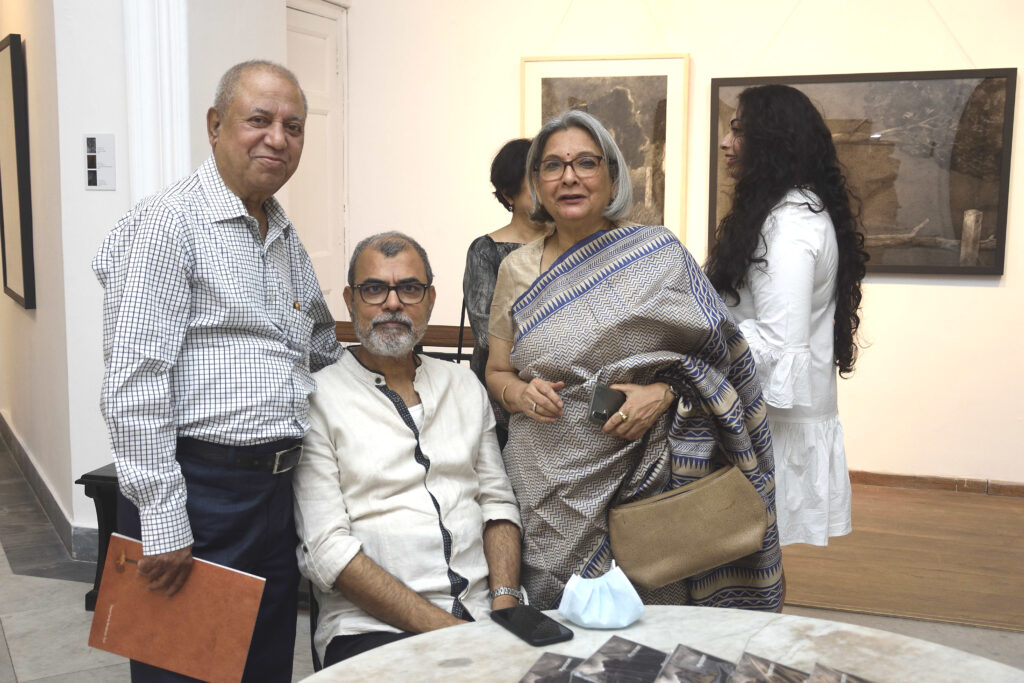
Graduated from the Indian College of Art and Draughtsmanship with a first class in 1986. Received gold medal for excellence in fine arts by Rabindra Bharati University in 1986 and Taj Gaurav award in 2008. Honoured by the President of India as artist- in residence at The Rashtrapati Bhavan in November 2020. I started my career as a billboard artist, subsequently did a stint as a graphic designer with The Economic Times.
-Chandra Bhattacharya
At The Economic Times, he was in charge of page setting, at best a mechanical job. He held on to his dreams through this routine, as he had done back in Patuli. He exhibited for the first time in 1992 at the Academy of Fine Arts, Kolkata. Slowly his art spread to other cities of India.
Beyond Kolkata, beyond India, Chandra yet searches for himself even as his fame spreads. His work evolved constantly with the changing times but what remained constant was the mind of the boy Chandra as he walked down those paddy fields holding tightly to his aunt’s hand. A mind that remained overwhelmed by the eternal imagery of Nature. As this Nature is consumed by a brick and cement civilisation, the heart of the artist cannot but despair at it. Chandra could express his angst the only way he knew, through his art. Therefore was born ‘Santiniketan’, his observed reality.
There are few artists in India who are not acquainted with Santiniketan, which is of course synonymous with Rabindranath Tagore. It was Rabindranath who had broken the typical stylisation of Indian landscape painting, and given it a new dimension. Ignored and even vilified earlier, the world is now giving his paintings their rightful due. Not just Rabindranath, but Gaganendranath Tagore, Nandalal Bose, Ramendranath Chakravorty, Ramkinkar Baij and Binode Behari Mukherjee have also left behind their signature articulations of the red earth world of Santiniketan.
Over the years, Chandra has tried to capture and interpret his own understanding of Santiniketan, first with the help of his camera lenses, then onto his charcoal sticks and brushes. He has repeatedly returned to his home in Kolkata with the concept of Santiniketan, frozen in his high-resolution frames, dominating his mind. Examining and re-examining his images over time, he found his extremely personal, and sadly a shattering testimony, of change before his eyes- of Santiniketan moving away from the near- utopia of the earlier masterpieces. Of asphalt and barbed wires visibly cementing the loose red soil ecosystem , eroding its resilient foliage. The visible mutilation is only an allegory of the insidious undercurrents that now roil the ‘abode of peace’.
As I enter Chandra’s studio in Kolkata one evening and hear the strains of Tagore’s ‘The winding red road/ Over there of yore/Steals my heart so/And I forget my woes’, I can only marvel at the artist’s empathy with Nature, which unites his oeuvre.
– Jyotirmoy Bhattacharya


